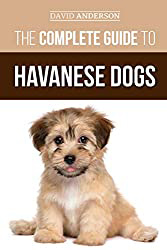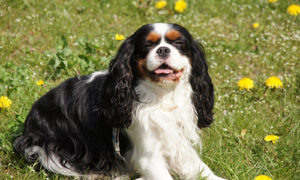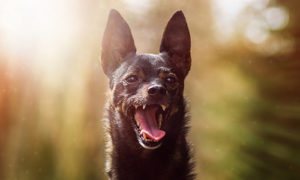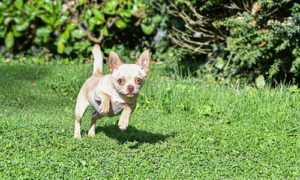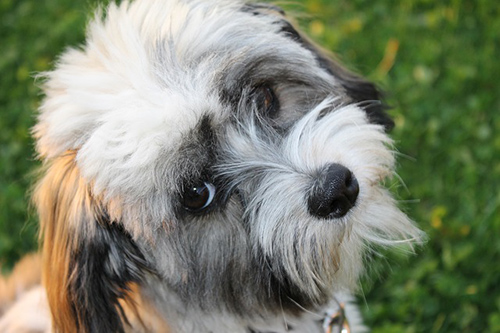
The Havanese is the national dog of Cuba. It is a descendent of the small breeds brought to the Island from Europe via the port of Tenerife over the centuries. It was bred as a family companion dog and became very popular both in Cuba and in Europe.
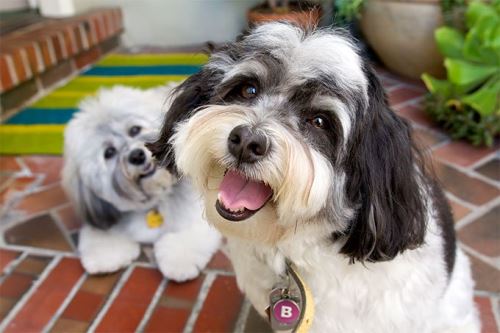
Many know it as the Havana Silk Dog, Spanish Poodle, and Bichon Havanese. However, the breed neared extinction in Cuba in the 1950s, as people and their dogs left the country during the Cuban revolution, but a few dogs that ended up in the United States were used to establish breeding programs. Most of today’s dogs trace their ancestry back to these bloodlines.
This breed is small and sturdy with rectangular proportions and a profuse coat. It has a neck of moderate length, a back that rises from shoulder to hips, and a high-set tail covered with a plume of silky hair and carried loosely over the rump. The skull is broad and slightly rounded, with a rectangular muzzle. The medium-length ears are set high, and the dark eyes give the dog a soft, intelligent expression.
Havanese Breed Facts
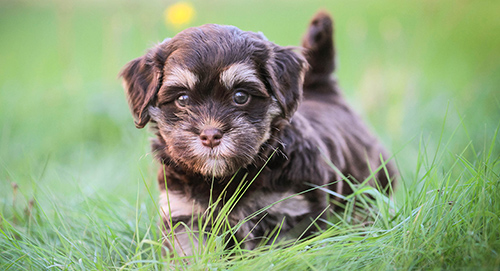
Activity level: These dogs enjoy activities such as obedience, rally, agility, and even flyball.
- POPULARITY: Very popular
- FAMILY: Barbichon
- AREA OF ORIGIN: Cuba
- DATE OF ORIGIN: Ancient times
- ORIGINAL FUNCTION: Lapdog, performer
- TODAY’S FUNCTION: Companion
- OTHER NAME: Bichon Havanais
Havanese Temperament
This breed is known for its friendly disposition. Havanese are wonderful companions – playful, affectionate, and entertaining. They are sociable and typically get along well with other pets. As they are attentive and responsive to training, they can do well in dog sports and are wonderful therapy dogs.
Grooming
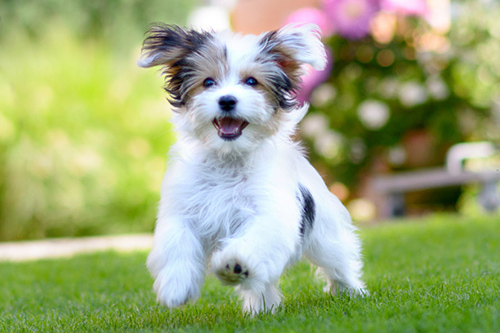
The coat sheds minimally and needs brushing and combing daily to prevent matting.
- Coat: This dog has a long, abundant double coat that is soft and light in texture. The outer coat is slightly heavier than the undercoat.
- Color: All colors or color combinations.
Health
- Major concerns: none
- Minor concerns: patellar luxation
- Occasionally seen: chondrodysplasia, Legg-Perthes, elbow dysplasia, portacaval shunt, mitral valve insufficiency, deafness
- Suggested: knee, eye, hip, (cardiac), hearing
- Life span: 12-14 years
Buying a Havanese and Breeder Information
Buyers may face a wait for a puppy, as puppies’ interest far exceeds their availability from good breeders who do all necessary health testing. Buyers may have to travel to obtain a puppy because Havanese breeders are not in every state.
- Regional clubs: There are close to twenty local Havanese clubs, whose information can be found on the parent club’s website under “Local Clubs.”
Rescue: Havanese Rescue, Inc. (www.havaneserescue.com)

